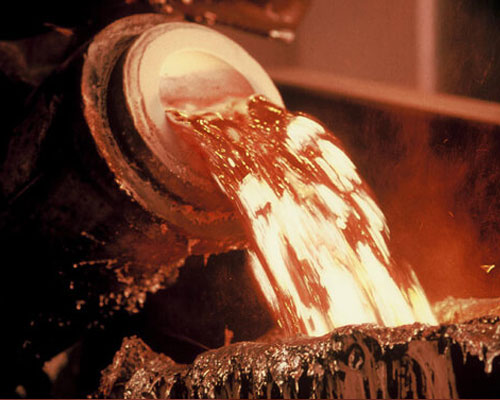Refining aluminum liquid can remove iron and other impurity elements. AdTech refining flux is a kind of white with slightly gray fine particles. The Main ingredients are chloride with other compounds. It turns to uniform size after heat treatment and screening. Under the action of nitrogen or argon as the carrier gas, refining flux is injected into the melt two times through the powder spraying tank. After physical and chemical changes in molten aluminum, numerous small bubbles with impyrities are separated and formed. The bubbles carrying hydrogen atoms slowly rise up and float out, so as to achieve the purification.
Iron is the main impurity element in aluminum alloy.
There are two forms of iron in aluminum, one is the β phase (Al9Fe2si2) with a needle-like structure, and the other is the α phase (Al12Fe3si) with a granular structure. Different phase structures have different effects on aluminum alloys. The β of the flaky structure is more destructive than the α phase of the granular structure. The β phase will cause the surface roughness, mechanical properties and corrosion of aluminum profiles. After the surface of the aluminum profile is blue, the gloss is reduced, and the pure color cannot be obtained after coloring, so the iron content must be controlled.

In order to reduce the harmful effects of iron and realize the refining of impurity elements, the following measures can be taken:
Before use, all tools used for smelting and casting should be coated with rinse paint, which can reduce the dissolution of iron in molten aluminum.
Refining Aluminum Liquid, make the iron phase finer and smaller, and reduce its harmful effects.
Adding an appropriate amount of strontium will transform β phase into α phase and reduce its harmful effects.
Carefully select waste materials to minimize the amount of iron wires, nails, iron filings and other debris entering the aluminum furnace, resulting in increased iron content.
Other impurity elements in electrolytic aluminum ingots are lower than national standards, and may exceed the standards when using recycled aluminum scrap. In the production process, the content of each element must be controlled not to exceed the standard, and the total amount of impurity elements must not exceed the standard. When the content of a single element does not exceed the standard, but the total amount exceeds the standard, these impurity elements also have a great impact on the quality. Practice has proved that when the zinc content reaches 0.05, white spots will appear on the surface of the oxidized profile, so the zinc content should be controlled below 0.05.

